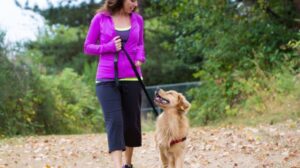
Guidelines for Teaching Bite Inhibition to Puppies: Advice for Dog Owners
As soon as you acquire a young dog, its first task should be learning bite inhibition. This term refers to controlling biting force during play – something the young four-legged friend will have learned from its mom and siblings during socialization sessions with other canines. Unfortunately for humans with more sensitive skin types, even minor pinches can cause pain!
Bite inhibition training should be implemented in a fun, playful, yet consistent fashion. Your goal should be for your dog to understand that his teeth shouldn’t be used too firmly during playtime. To keep matters as straightforward as possible, teach your puppy not to bite people of any sort – even gently!
How your puppy learns bite inhibition during play
Training bite inhibition requires quiet, time and patience – as well as a toy that your puppy can safely grab with his teeth. Watching dogs play with each other or their parents is an excellent way to learn how to teach your puppy bite inhibition; whenever a puppy bites too hard while wrestling its play partner will yelp briefly and interrupt play; dogs mother may use muzzle gripping (a technique sometimes recommended for humans as training methods), however human beings tend to do many wrong things themselves; therefore disrupting play is the preferred training method.
As soon as your puppy pinches your hand, arm, or calf while playing, say “ouch” and stop immediately. Once they have calmed down again, resume play. As long as he only bites into toys rather than hitting you with his teeth during gameplay, play continues uninterrupted; only interruption occurs if his teeth hit you instead of just biting into toys! Eventually your puppy will understand that pinching will end any play session quickly.
Are You Overexcited Puppy? Train Biting Inhibition with Timeouts.
Sometimes this approach alone may not be sufficient to teach your young dog bite inhibition. If he becomes too excited and overconfident during play, he won’t understand that play will only continue if he refrains from biting. To remedy this situation, step away briefly or carry the puppy into another room shortly after using his teeth during play – not as punishment but simply to help lower his excitement level more gradually than if play continues immediately afterwards – then train bite inhibition again using play interruptions and short timeouts until your young dog has learned his lessons.
Children and Dogs: Understanding bite inhibition is of equal importance for both parties involved.
Training bite inhibition should be carried out by adults or older children who can interact responsibly and calmly with the dog. Young children cannot yet accurately gauge their strength; therefore they need to learn first how to interact with dogs themselves and must gain internal stability before communicating their ideas to an understandable manner with regards to bite inhibition training.
Accidents can quickly arise if your puppy hasn’t learned bite inhibition properly, so use the following techniques to train it from birth so he or she will only use his teeth when playing with objects and not children. Though these methods work, children and dogs should never be left together unsupervised regardless of how well-behaved the four-legged friend may be; for adult dogs lacking bite inhibition it would be wise to get help from an experienced dog trainer.

